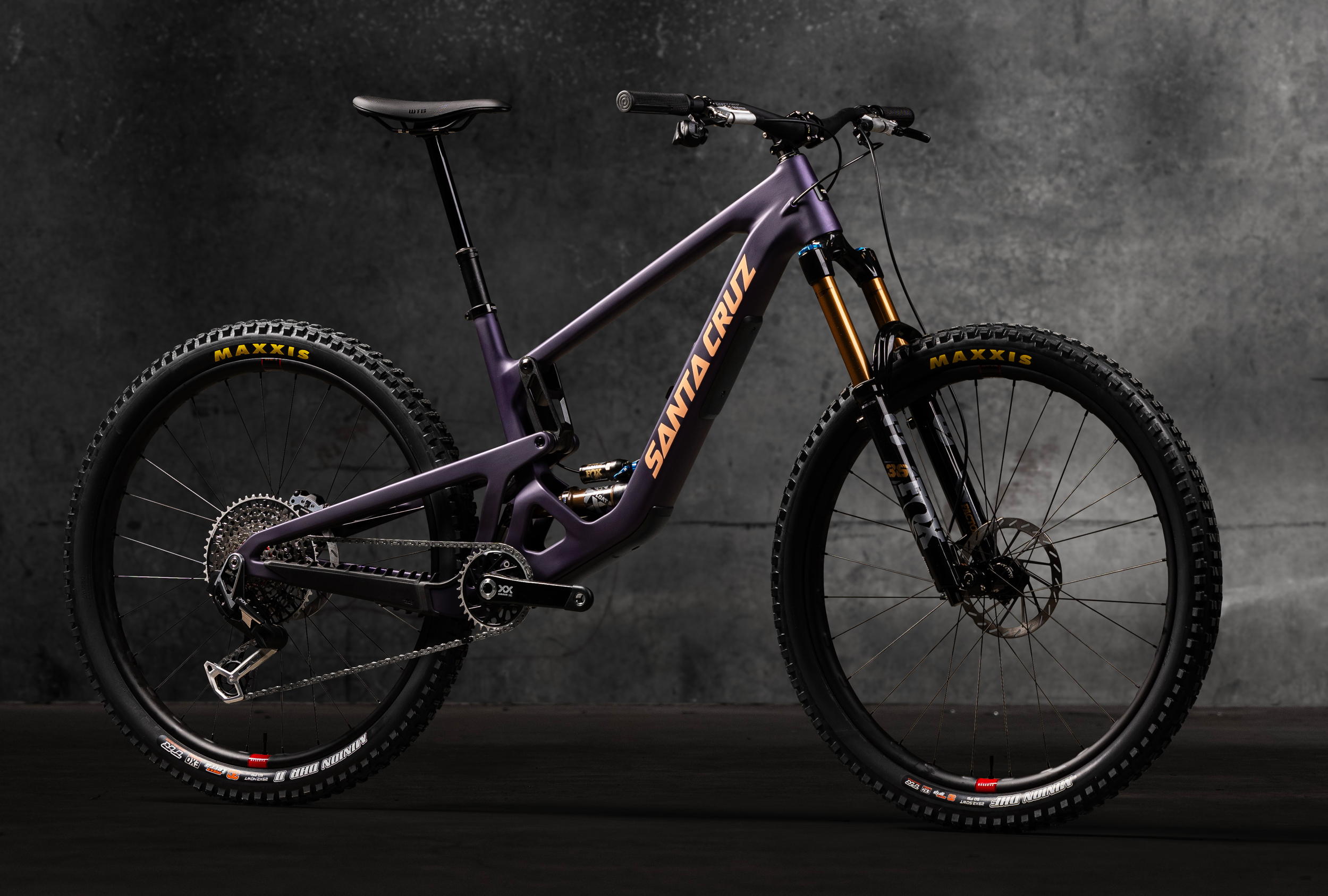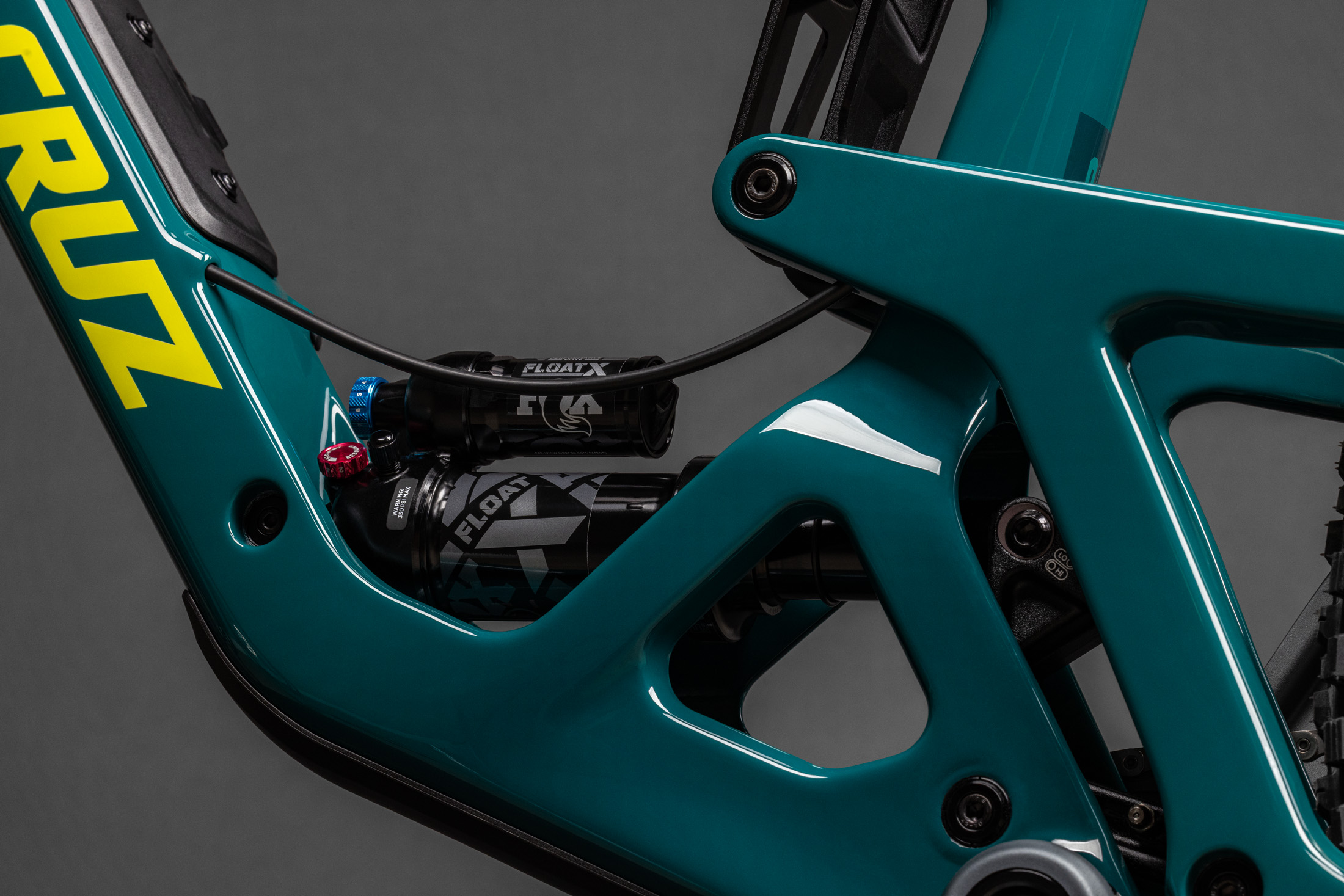Santa Cruz has given its do-it-all trail bike more muscle, to lure riders away from the big-travel Nomad

The latest Santa Cruz Hightower V4 has some subtle visual changes and a few mild tweaks to geometry and attitude.
Hot on the heels of the latest Bronson update, Santa Cruz has worked over the Hightower with a more gravity-focus that includes extra travel, a slacker head angle, and better bump absorption (according to the press release). Now it aims to retain its status as a great trail bike (I loved the Hightower when I last tested it) for covering ground and getting from A to B, and extend its capability over gnarlier, rowdier terrain. Jamie Darlow has been out testing the new Santa Cruz Hightower, and you can read his first ride review here.

Santa Cruz has shifted the dial with the new Hightower, nudging it closer to the enduro-spec Megatower.
Santa Cruz Hightower V4 need to know
- 29er trail bike with 150mm travel and a 160mm fork (up from 145mm / 150mm)
- Revised VPP suspension moves more in favour of bump performance than pedalling efficiency
- Slacker head angle compared to previous bike – now 64º
- Every size grows slightly, with longer reach, stack, and rear centre lengths
- C and (lighter) CC carbon frames
- Flip chip and Glovebox internal frame storage
- Lifetime warranty on frames and bearings
Now in its fourth iteration, this latest update seems to move the needle a little closer towards the Megatower, with more travel, slacker steering geo and changes to the VPP that reduce anti-squat and claim to improve suspension performance on really janky trails. If that sounds familiar, it’s essentially the same story told with the updates to the MX-wheel Bronson just a few weeks ago. If we agree that bike design is just about choosing where to optimise and where to compromise, it looks like Santa Cruz has decided to give up some pedalling efficiency in favour of more gravity performance.

Enlarged shock window makes it slightly easier to check the O-ring position.
Digging a little deeper, the new geometry reinforces this, with slightly longer reach measurements across the five frame sizes. Stack heights are a little taller too, with over half a degree snipped off the head angle. There are still two flip-chip positions, with the slacker of the two giving 63.9º, and the alternative steepening that by a meagre 0.3º. Rear centre measurements are still unique to each frame size and get a little longer than on the old bike. They’re still relatively short though, starting at 434mm and ending up at 445mm, using different anchoring points for the main pivot to achieve the ‘proportionality’ rather than unique swingarms.

Flip chips gives two marginally different geo positions.
Just as Santa Cruz did on the Bronson, the lower VPP link has moved down and forward, and anti-squat values have been reduced by around 15% through the travel. The knock-on effect of this will be more active suspension and reduced pedal kickback – something that should help chundery tracks and janky high-alpine riding.

The Hightower: Now aiming even higher.
Visually, nothing too radical has changed, but there is a large window cut out of the shock tunnel, and the front of the shock now nestles into a recess in the down tube. For stashing tools, snacks, and spares, the Glovebox internal storage remains.

The Glowebox internal down tube storage is a practical feature.
Santa Cruz Hightower V4 model range overview
There are two frame levels offered with three build kits for each. So the range starts with the Hightower C R at £4,899, which comes with a RockShox Lyrik Base fork, Fox Rhythm shock, SRAM DB8 brakes and NX drivetrain. Next in line is the Hightower C S at £5,699. This gets a Fox Float 36 Performance fork, Float X Performance shock and SRAM GX drivetrain.

The entry-level Santa Cruz Hightower C R costs £4,899.
For an extra £900 the GX AXS model gets, you guessed it, SRAM’s wireless AXS drivetrain, along with suspension upgrades in the form of a Performance Elite fork and shock. It also comes with SRAM Maven brakes. The last three models share the premium CC frame, which uses a stronger carbon weave that can be built into a lighter frame. Fox Factory-level suspension adorns this frame on the X0 AXS spec for £7,799, as well as a wireless SRAM AXS drivetrain. In fact, all CC models use wireless drivetrains as there is no gear cable routing.

Moving up the ladder, there’s the Hightower CC XO AXS RSV for £8,799.
At the very tip of the spear are the Hightower CC X0 AXS RSV at £8,799, and the CC XX AXS RSV at £9,999. The main upgrades here being the addition of carbon Reserve wheels.



